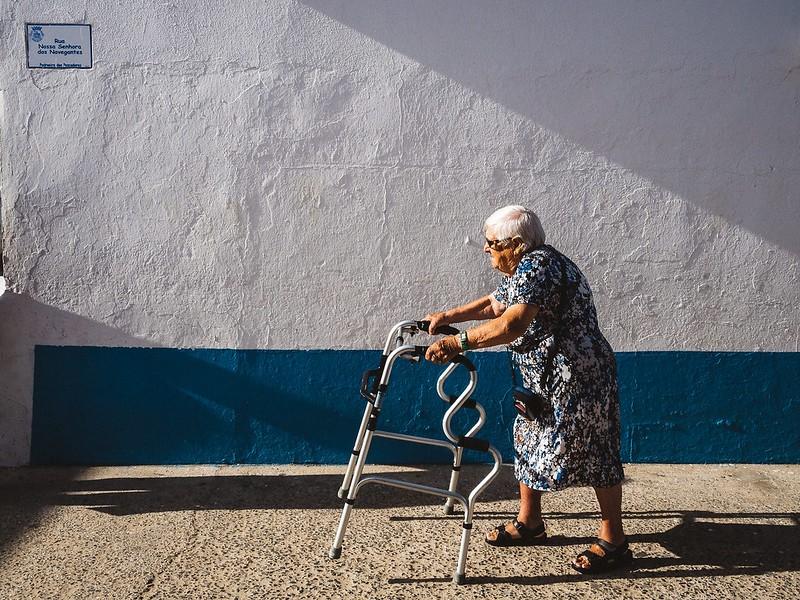Two new studies uncover the profound impact of the COVID-19 pandemic on global life expectancy (LE), one showing substantial and sustained LE losses in the United States and Eastern Europe, and the other finding a link between LE at 60 years of age before the pandemic and excess deaths amid COVID-19 only in countries with older populations.
Lifespan fell further in 2021 in 12 nations
In the first study, a team led by researchers from the Max Planck Institute for Demographic Research in Germany and the University of Oxford used the Short-Term Mortality Fluctuations Database to examine all-cause mortality and LE changes in 29 countries, including the United States, most of Europe, and Chile, since 2019. The research was published this week in Nature Human Behaviour.
Eight of the 29 countries saw substantial rebounds from 2020 LE losses, including Belgium (+10.8 months), Switzerland (+7.7), Spain (+7.6), France (+5.0), England and Wales (+2.1), Italy (+5.1), Sweden (+7.5), and Slovenia (+3.1).
But on top of the 2020 losses, LE fell further in 2021 in 12 countries: Bulgaria (−25.1 months), Chile (−8.0), the Czech Republic (−10.4), Germany (−3.1), Estonia (−21.5), Greece (−12.4), Croatia (−11.6), Hungary (−16.4), Lithuania (−7.9), Poland (−12.1), Slovakia (−23.9), and the United States (−2.7). In Scotland and Northern Ireland in 2021, LE showed no rebound from 2020.
In 2021, France, Belgium, Switzerland, and Sweden all rebounded completely from substantial 2020 losses. Three countries, Denmark, Norway, and Finland, saw no LE loss in 2020, but only Norway had a significantly higher LE in 2021 than in 2019.
All countries saw lower-than-expected LE in 2021, as prepandemic trends continued. Bulgaria, Chile, Croatia, the Czech Republic, Estonia, Germany, Greece, Hungary, Lithuania, Poland, and Slovakia all experienced much higher LE deficits in 2021 than in 2020.
Older people became less vulnerable
In 2021, pandemic deaths shifted toward younger age-groups, with US mortality for ages 80 and older returning to prepandemic levels, possibly due to higher COVID-19 vaccination uptake in this group, but LE losses worsening in ages 60 and younger. An increase in deaths in the younger age-group contributed to LE losses of 7.2 months in 2021 over 2020, cancelling the LE rebounds in the older age-group and yielding a net drop of 2.7 months in 2021.
Excess deaths in Americans younger than 60 years were behind 58.9% of LE losses since the pandemic began. Losses in this age-group, especially for men, were much higher in the United States than in most other countries in 2020.
Women had higher LE in all countries amid the pandemic, with a difference ranging from 3.17 years in Norway to 9.65 years in Lithuania, and the female advantage rose significantly in 16 of the 29 countries. The largest increase in the sex gap occurred in the United States, where it rose from 5.72 to 6.69 years.
COVID-19 deaths explained most LE losses in 2021 across all countries except for the Netherlands, where other causes made up 51.7% of the LE deficit. Higher vaccination coverage by October 2021 was tied to smaller LE deficits in the last 3 months of 2021 across countries and across age-groups.
"Human populations faced multiple mortality crises during the twentieth century, yet LE kept increasing globally in the medium and long term, especially in the second half of the twentieth century," the researchers wrote. "While COVID-19 has been the most severe global mortality shock since World War II, we will have to wait to know whether and how longer-term LE trends are altered by the pandemic."
In a University of Oxford news release, coauthor Jose Manuel Aburto, PhD, said that Brazil and Mexico [not included in the study] saw even worse LE losses in 2020 than the United States. "So it is likely these countries may have continued suffering mortality impacts in 2021—even potentially exceeding the 43 months we estimated for Bulgaria," he said.
Aging and excess mortality
In a research letter today in JAMA Network Open, investigators from Jikei University in Tokyo describe their analysis of LE at age 60 before the pandemic and excess mortality from January 2020 to December 2021 in 158 countries.
Across countries, the median proportion of the population aged 60 years or older was 9.7% (range, 2.8% to 34.0%). After adjustment in 40 countries with aging populations, three factors were linked to excess mortality, including LE at 60 years, per-capita gross domestic product, and the proportion of fully vaccinated residents. But in a multiple linear regression analysis, only LE at 60 years remained significant.
The likelihood of dying from cardiovascular disease, cancer, diabetes, or chronic respiratory disease at 30 to 70 years of age was most strongly associated with excess mortality. Death rates in people 15 to 60 years old and children 5 to 14 years old, however, had weaker associations with excess mortality, and the death rate in those 5 and younger was not associated.
"The results suggest that long life expectancy at old age in aging countries may be considered a proxy variable associated with high-quality health care systems and resilience to health care crises, including pandemics," the authors concluded.




















